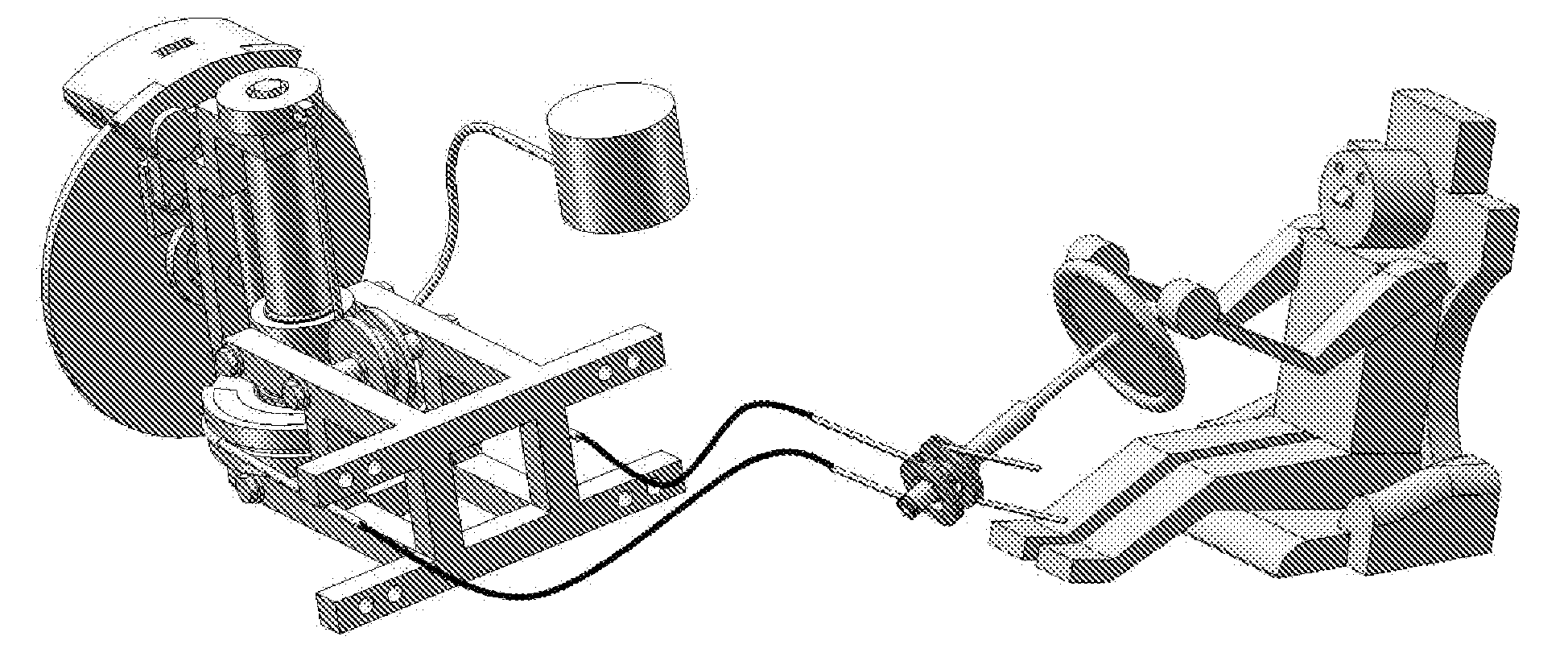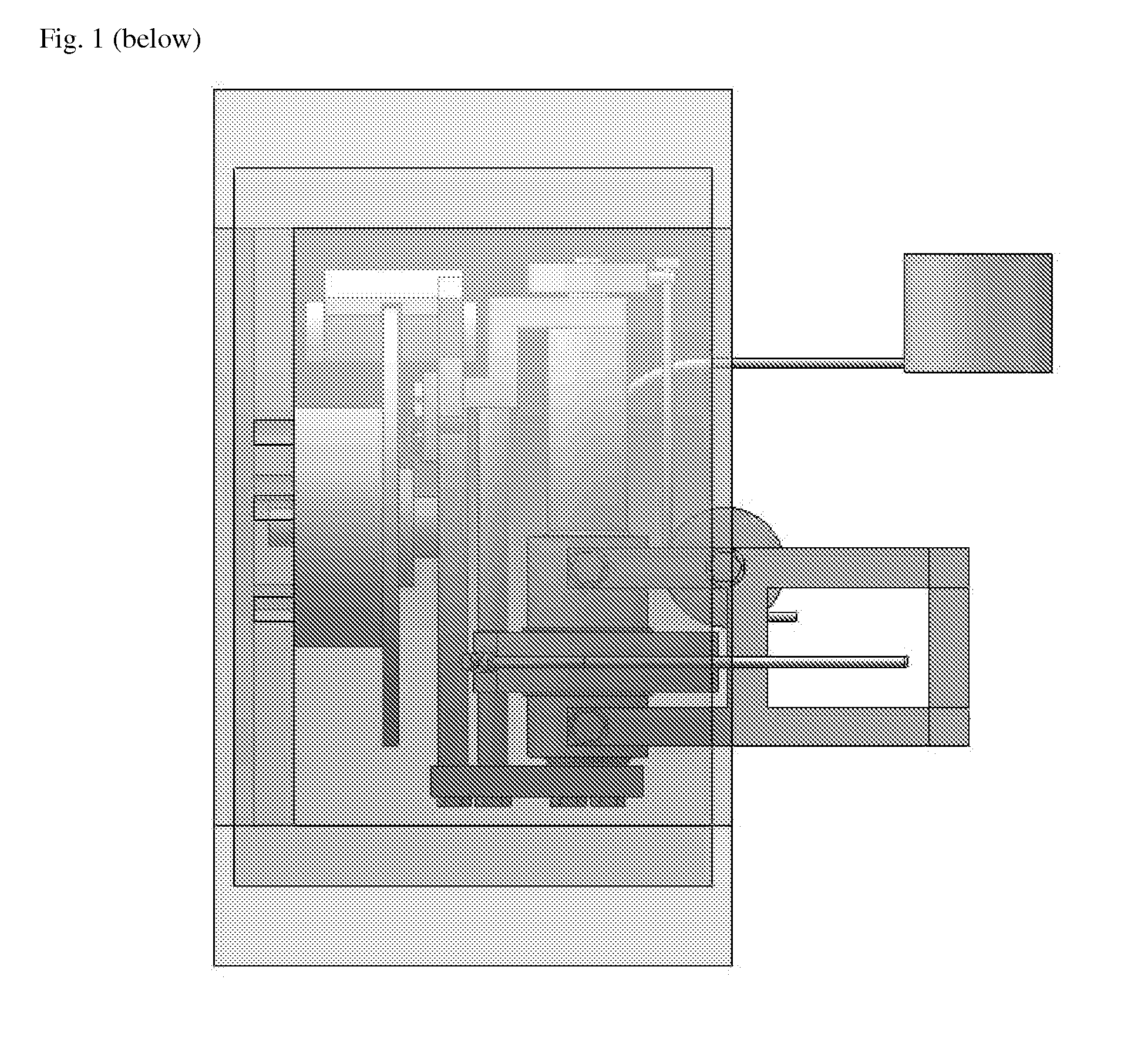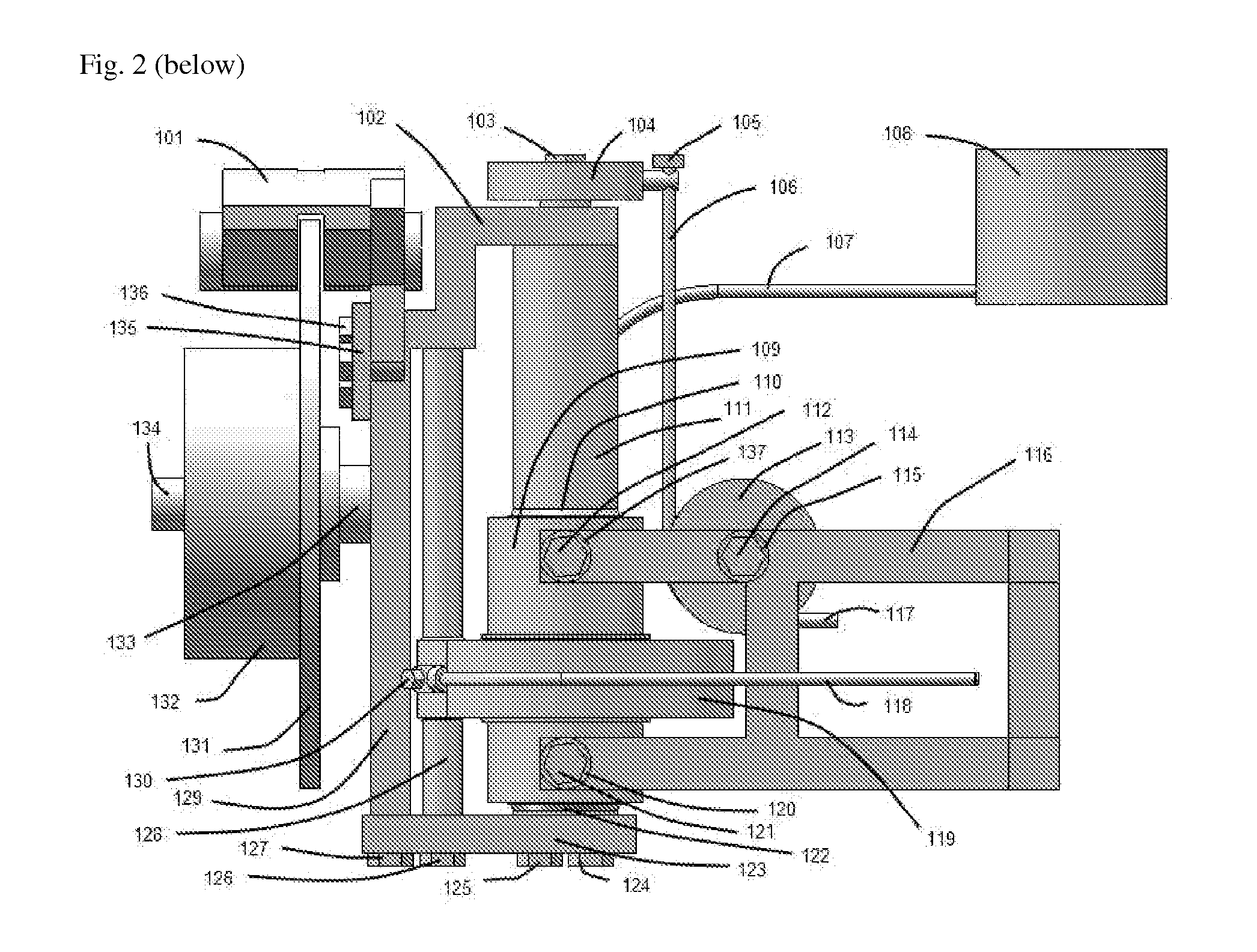Vehicle suspension, steering, damping and anti-roll system with linear wheel travel
a technology of suspension springs and linear wheels, which is applied in the direction of shock absorbers, mechanical equipment, transportation and packaging, etc., can solve the problems of lack of adjustability, excessive driver steering strength, and most modern systems continue to be plagued, so as to improve the interior occupant and cargo space, reduce the bulkiness of suspension components, and facilitate the adjustment of suspension springs. the effect of speed
- Summary
- Abstract
- Description
- Claims
- Application Information
AI Technical Summary
Benefits of technology
Problems solved by technology
Method used
Image
Examples
Embodiment Construction
Description of Components Involved in Suspension Travel
[0062]The wheel attaches to hub 132. During road bumps, the upward tire force is transferred to the main rod of the knuckle 111 via the wheel spindle 133 and spindle frame of the knuckle 129. This upward force causes the knuckle assembly to move in an upward, linear direction. The knuckle assembly components move up and down in concert. The knuckle assembly components consist of the spindle support frame 129, the upper knuckle frame 102, the main rod 111, the lower end cap 123 and the secondary rod 128. The knuckle assembly moves up or down relative to the subframe 116 (and vehicle frame) while sliding in the sleeve 109. As the knuckle assembly moves upward, the upper part of the suspension cable 106 moves upward and increases cable tension. The suspension cable contains a stop 105 at its top end. Upward movements of the knuckle assembly are transmitted to washer 151, inner bearing race of bearing 150, to outer bearing race of b...
PUM
 Login to View More
Login to View More Abstract
Description
Claims
Application Information
 Login to View More
Login to View More - R&D
- Intellectual Property
- Life Sciences
- Materials
- Tech Scout
- Unparalleled Data Quality
- Higher Quality Content
- 60% Fewer Hallucinations
Browse by: Latest US Patents, China's latest patents, Technical Efficacy Thesaurus, Application Domain, Technology Topic, Popular Technical Reports.
© 2025 PatSnap. All rights reserved.Legal|Privacy policy|Modern Slavery Act Transparency Statement|Sitemap|About US| Contact US: help@patsnap.com



